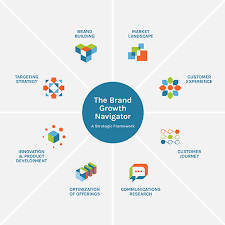The Art of Designing a Website
Designing a website is more than just creating a visually appealing layout. It involves a careful blend of creativity, functionality, and user experience to craft a digital space that engages and captivates visitors. A well-designed website not only reflects your brand identity but also serves as a powerful tool to communicate your message effectively.
Understanding Your Audience
Before diving into the design process, it’s crucial to understand your target audience. Who are they? What are their needs and preferences? By gaining insights into your audience, you can tailor the design elements to resonate with them and create a more personalised experience.
Creating a Visual Identity
The visual identity of your website plays a significant role in shaping how visitors perceive your brand. From colour schemes and typography to images and graphics, every element should align with your brand’s personality and values. Consistency in design helps establish brand recognition and builds trust with users.
Embracing User-Centred Design
User experience (UX) is at the core of effective website design. Prioritising usability and intuitive navigation ensures that visitors can easily find what they’re looking for and have a seamless browsing experience. Incorporating user feedback and testing can help refine the design to better meet the needs of your audience.
Optimising for Performance
A visually stunning website is ineffective if it lacks performance optimisation. Loading speed, mobile responsiveness, and search engine optimisation (SEO) are essential factors that contribute to the overall success of your site. By optimising these aspects, you can enhance user satisfaction and improve search engine rankings.
In conclusion, designing a website is an intricate process that requires attention to detail, creativity, and strategic thinking. By focusing on user experience, visual identity, and performance optimisation, you can create a website that not only looks great but also delivers results for your business.
9 Essential Tips for Designing an Effective Website
- Keep the design clean and uncluttered.
- Use a consistent colour scheme and typography throughout the website.
- Ensure easy navigation with clear menus and links.
- Optimise images and videos for faster loading times.
- Make sure the website is mobile responsive for different devices.
- Include a call to action on important pages to guide users.
- Utilise white space effectively to improve readability and visual appeal.
- Test the website across different browsers to ensure compatibility.
- Regularly update content and check for broken links.
Keep the design clean and uncluttered.
When designing a website, it is essential to keep the design clean and uncluttered. A cluttered layout can overwhelm visitors and distract them from the core message or purpose of the site. By maintaining a minimalist approach with ample white space, clear navigation, and concise content, you can create a visually appealing and user-friendly experience that allows visitors to focus on the key elements of your website. A clean design not only enhances readability but also conveys professionalism and sophistication, making it easier for users to engage with your content effectively.
Use a consistent colour scheme and typography throughout the website.
Maintaining a consistent colour scheme and typography across all pages of your website is essential for creating a cohesive and visually appealing design. Consistency in design elements such as colours and fonts helps reinforce your brand identity, enhances user experience, and fosters a sense of professionalism. By establishing a unified visual language, you can guide visitors through your site seamlessly, create a harmonious aesthetic, and leave a lasting impression that reflects the integrity and attention to detail of your brand.
Ensure easy navigation with clear menus and links.
To ensure a seamless user experience on your website, it is essential to prioritise easy navigation by providing clear menus and links. Clear and intuitive navigation not only helps visitors quickly find the information they are looking for but also enhances usability and encourages exploration of your site. By organising your menus logically and ensuring that links are prominently displayed and easy to click, you can guide users through your website effortlessly, leading to increased engagement and satisfaction.
Optimise images and videos for faster loading times.
Optimising images and videos for faster loading times is a crucial tip in website design. By reducing the file size of media content without compromising quality, you can significantly improve the loading speed of your website. This not only enhances user experience by minimising waiting times but also positively impacts SEO rankings, as search engines favour fast-loading sites. Implementing image and video optimisation techniques ensures that your website remains efficient and accessible to users across various devices and network conditions.
Make sure the website is mobile responsive for different devices.
It is essential to ensure that your website is mobile responsive to cater to the diverse range of devices used by visitors. A mobile-responsive design adapts seamlessly to various screen sizes and resolutions, providing users with an optimal viewing experience on smartphones, tablets, and other mobile devices. By prioritising mobile responsiveness, you can enhance user engagement, improve accessibility, and boost your site’s performance across different platforms, ultimately creating a more inclusive and user-friendly browsing experience for all visitors.
Include a call to action on important pages to guide users.
Including a call to action on important pages is crucial in guiding users towards desired actions and enhancing user engagement. A well-crafted call to action serves as a clear directive, prompting visitors to take the next step, whether it’s making a purchase, signing up for a newsletter, or contacting your business. By strategically placing calls to action throughout your website and making them prominent, you can effectively lead users towards conversions and improve the overall user experience.
Utilise white space effectively to improve readability and visual appeal.
Utilising white space effectively is a key tip in website design to enhance readability and visual appeal. By incorporating adequate spacing between elements, text, and images, you can create a clean and uncluttered layout that allows content to breathe. White space not only improves the overall aesthetic of the website but also helps guide the user’s eye and focus on important information. When used strategically, white space can elevate the design, making it more engaging and easier to navigate for visitors.
Test the website across different browsers to ensure compatibility.
It is essential to test the website across various browsers to ensure compatibility and a consistent user experience. Different browsers may interpret code differently, leading to discrepancies in how the website appears and functions. By conducting thorough cross-browser testing, you can identify and address any compatibility issues, ensuring that your website is accessible and functional for all visitors, regardless of the browser they use.
Regularly update content and check for broken links.
Regularly updating content and checking for broken links are essential practices in maintaining a well-functioning and user-friendly website. By keeping your content fresh and relevant, you not only engage visitors but also improve your site’s search engine ranking. Additionally, regularly checking for broken links ensures a seamless browsing experience for users and helps maintain the credibility of your website. Consistent updates and maintenance demonstrate your commitment to providing valuable information and a smooth navigation experience for your audience.




